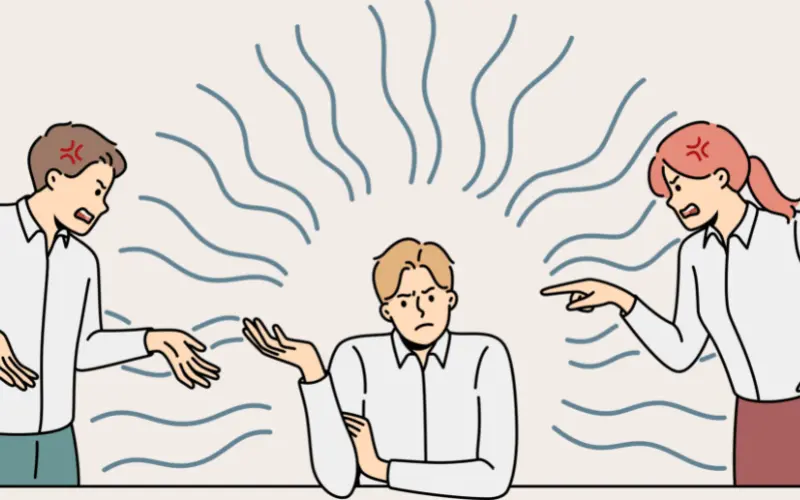Autism spectrum disorder is a brain development disorder that affects how a person sees and interacts with others, resulting in social interaction and communication issues. Limited and repetitive patterns of conduct are also part of the condition. In autism spectrum disorder, the term “spectrum” refers to the vast range of symptoms and severity.
ASD (Autism Spectrum Disorder), like other neurodevelopmental disorders, are rarely “curable,” necessitating long-term treatment. Although results vary and particular behavioural traits alter over time, most children with ASDs stay on the spectrum as adults and continue to struggle with independent living, work, and social reintegration, regardless of their intellectual competence.
The main aims of therapy are to reduce the core symptoms and impairments, increase functional independence and quality of life, and reduce family stress. These aims can be achieved through facilitating growth and learning, increasing socialisation, decreasing maladaptive behaviours, and educating and supporting families. Interventions should ideally help reduce the basic characteristics of ASDs, such as impaired social reciprocity, communication impairments, and a limited, repetitive behavioural repertoire.
Interventions In Education
Education is defined as the process of fostering the acquisition of skills and knowledge in order to help a child develop independence and personal responsibility. Socialisation, adaptive skills, communication, the amelioration of interfering behaviours, and the generalisation of talents across various settings are all part of it. Physicians and other clinicians are frequently in a position to direct families to scientifically validated methods and assist them in assessing the appropriateness of educational services provided.
Young Children’s Comprehensive Programs
Because of earlier diagnosis and evidence that early intensive intervention can result in much improved results, educational intervention research and programme creation has primarily focused on very young children with ASDs in the previous two decades.
Comprehensive evaluations have detailed model early childhood educational programmes for children with ASDs. On the basis of the fundamental philosophical approach, these model programmes are frequently classified as behaviour analytic, developmental, or structured instruction. Although there are significant distinctions between the techniques, there is also overlap. Although programmes range in philosophy and emphasis on specific techniques, they all have a number of similar aims, and there is a growing consensus that the following are key concepts and early childhood intervention for children with ASDs should include the following components:
- Rather than waiting until a formal diagnosis is established, intervention should begin as soon as an ASD diagnosis is strongly contemplated.
- Intense intervention with active participation of the child in carefully planned, developmentally appropriate educational activities aimed to achieve defined objectives for at least 25 hours per week, 12 months per year.
- Low student-to-teacher ratio to allow for enough one-on-one and small-group training to achieve particular customised goals.
- Inclusion of a family component (including, if mentioned, parent training).
- Promotion of chances for engagement with normally developing peers to the degree that these possibilities aid in the achievement of certain educational goals.
- Continuous assessment and documenting of each child’s progress toward educational goals, resulting in programming modifications as needed.
To reduce distractions, a high degree of organisation is incorporated through features such as a regular routine, visible activity calendars, and defined physical boundaries.
Read : Autism: Symptoms, Causes, Treatments and Coping
Specific Approaches
In educational programmes for children with ASDs, a number of particular approaches are employed. Detailed reviews of intervention strategies to enhance communication teach social skills, and reduce interfering maladaptive behaviors have been published in recent years.Some of the approaches are briefly explained here:
Applied Behavior Analysis.
Applied behaviour analysis (ABA) is the process of systematically changing behaviour using interventions based on learning principles obtained from experimental psychology research and demonstrating that the treatments employed are accountable for the observable improvement in behaviour.
ABA techniques are used to teach new abilities, enhance and sustain desirable adaptive behaviours, minimise interfering maladaptive habits or restrict the settings under which they occur, and generalise behaviours to other contexts or situations. The goal of ABA is to quantify and objectively evaluate observable behaviour in a variety of situations, including the family, school, and community. Through five decades of study utilising single-subject methodology and controlled trials of complete early intensive behavioural intervention programmes in university and community settings, the effectiveness of ABA-based intervention in ASDs has been extensively demonstrated.
Discrete trial training (DTT) methodology is used heavily in highly structured comprehensive early intervention programmes for children with ASDs. DTT techniques are helpful in creating learning readiness by teaching fundamental skills including attention, compliance, imitation, and discriminating learning, among others. However, DTT has been chastised due to difficulties in generalising taught behaviours to spontaneous usage in natural settings, as well as the fact that the highly organised teaching environment is not replicated in the real world.To overcome these difficulties, traditional ABA approaches have been changed. Incidental teaching and natural language paradigm/pivotal response training are examples of naturalistic behavioural treatments that may help with skill acquisition.
Functional behaviour analysis, also known as functional assessment, is a key component of behaviorally based treatment for undesired behaviours. Most problem behaviours serve some sort of adaptive purpose and are rewarded by their outcomes, such as obtaining (1) adult attention, (2) a desired object, activity, or feeling, or (3) escaping from an unwanted circumstance or demand. Functional analysis may also be used to uncover antecedents and consequences linked to increasing frequency of desired behaviours, which can then be utilised to elicit novel adaptive behaviours.
Structured Instruction
Schopler and colleagues created the TEACCH technique, which stresses organisation and has come to be known as “structured teaching.” Physical environment organisation, predictable sequence of activities, visual timetables, routines with flexibility, organised work/activity systems, and visually structured activities are all important aspects of structured education. Several reports have demonstrated improvements in children receiving TEACCH services, as well as parent satisfaction and improved parent teaching abilities, but these findings were not based on controlled studies of treatment outcomes.Ozonoff and Cathcart discovered that children who got a TEACCH-based home programme in addition to their local day treatment programmes for four months benefited considerably more than children who received only local day treatment services in a controlled study.
Developmental Models
The use of developmental theory to organise ideas about the underlying nature of ASDs and devise ways to address the deficiencies is the basis of developmental models.
To overcome key deficiencies in imitation, emotion sharing, theory of mind, and social perception, the Denver method, for example, focuses on utilising play, interpersonal relationships, and activities to enhance symbolic cognition and teach the power of communication. This programme has moved away from being a center-based treatment unit and now provides services in people’s homes and in inclusive school settings. Several studies have shown that children treated according to the Denver model gain cognitive, motor, play, and social abilities above what would be predicted based on their starting developmental rates, although controlled trials are missing.
Greenspan and Wieder’s developmental, individual-difference, relationship-based model, Gutstein and Sheely’s relationship-development intervention, and Mahoney et alresponsive-teaching’s curriculum are all relationship-focused early intervention approaches. The DIR approach focuses on “floor-time” play sessions and other strategies to improve relationships and emotional and social interactions in order to facilitate emotional and cognitive growth and development, as well as therapies to correct “biologically based processing capacities,” such as auditory processing and language, motor planning and sequencing, sensory modulation, and others. An unblinded examination of case records and a descriptive follow-up analysis of a small subset of the original group of patients are the only published evidence of the DIR model’s success. RDI focuses on activities that elicit interactive behaviours with the goal of including the child in a social connection so that he or she learns the importance of excellent interpersonal engagement and is more motivated to develop the skills needed to maintain these connections. The face validity of this model, which tackles the basic deficit in social reciprocity, has been lauded by several reviewers.
In one study, RT was found to be beneficial to young children with ASDs or other developmental impairments. 58 Parents were taught how to utilise RT techniques to help their children learn and apply key developmental skills.
Speech Therapy
A range of techniques have been shown to be helpful in helping children with ASDs improve their communication abilities. Most children with ASDs can learn to speak, and chronological age, a lack of normal precursor abilities, inability to benefit from earlier language intervention, and a lack of disparity between language and IQ scores should not prevent a child from undergoing speech therapy.
Augmentative and alternative communication modalities, such as gestures, sign language, and image communication systems, can help people communicate more effectively. Voice-output communication tools may assist certain nonverbal persons with ASDs, although documented evidence for these aids is limited.
The use of augmentative and alternative communication systems by nonverbal children with ASDs does not prevent them from learning to speak, and there is some evidence that they may be more motivated to learn speech if they have some knowledge of symbolic communication.
Social Skills Instruction
Traditional and newer naturalistic behavioural techniques, as well as other ways to teaching social skills, have some objective data to back them up.
Because joint attention behaviours precede and predict social language development, joint attention training may be especially useful in young, preverbal children with ASDs.
Joint attention and symbolic play abilities may be taught, according to a recent randomised controlled study, and these talents can be generalised to other contexts and people.
Responding to the social overtures of other children and adults, starting social behaviour, reducing stereotypical perseverative behaviour while employing a flexible and diverse repertoire of answers, and self-managing new and existing abilities should all be part of a social skills programme.
The majority of descriptive and anecdotal literature supports social skills groups, social tales, visual cueing, social games, video modelling, scripts, peer-mediated approaches, and play and leisure curriculum, although the number and quality of research is growing. There are a variety of social skills curricula and standards that may be used at school and at home.
Occupational Therapy and Sensory Integration Therapy
Traditional occupational therapy is frequently used to help people develop self-care and academic abilities. Occupational therapists can also help with play skills development, changing classroom materials and routines to promote attention and organisation, and offering prevocational training. However, there is a scarcity of evidence on the effectiveness of occupational treatment in ASDs. For children with ASDs, sensory integration treatment is frequently utilised alone or as part of a larger occupational therapy programme.
SI therapy’s objective is not to teach specific skills or behaviours, but to correct deficiencies in neuronal processing and sensory integration so that the kid can engage with the world in a more appropriate way.
Unusual sensory reactions are prevalent in children with ASDs, but there isn’t enough data to say that these symptoms distinguish ASDs from other developmental problems, and the effectiveness of SI treatment hasn’t been proven objectively.
Although the available studies have methodological flaws, proponents of SI point out that more high-quality SI research is on the way. “Sensory” activities can be beneficial when used as part of a larger programme that employs desirable sensory experiences to soothe the child, reinforce a desired behaviour, or aid transitions between activities.
Conclusion
ASDs are long-term illnesses that afflict roughly one out of every 150 children and need continuous medical and nonmedical treatment.
Although there is a growing amount of data supporting the efficacy of some treatments in reducing symptoms and improving functioning, there is still much to learn.
In addition to identifying ASDs through screening and surveillance, establishing the diagnosis, conducting an etiologic evaluation, and providing genetic counselling after a diagnosis, paediatricians and other primary health care professionals are in a position to provide important longitudinal medical care, as well as support and educate families and guide them to empirical evidence.











